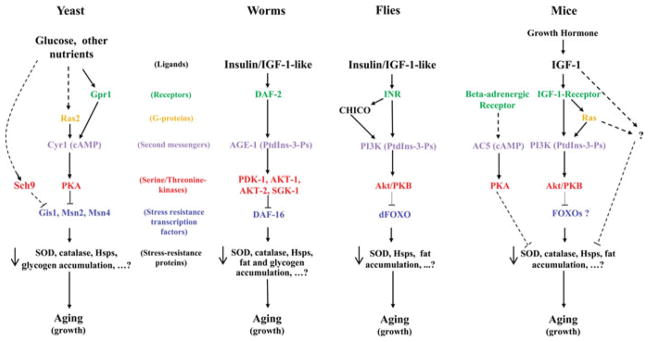Fig. 5.1.

Conserved regulation of the life span-regulatory pathways. In yeast, worms, and flies the activation of the pro-growth nutrient-sensing/IIS pathways inhibits the activity of stress resistance transcription factors (Gis1, Msn2/4, DAF-16, dFOXO), reduces cell protection and accumulation of fat and/or glycogen, and promotes aging. Mutations that reduce the activity of these pathways prolong life span. In yeast and worms this longevity extension requires the activation of a stress response dependent on Gis1/Msn2/4 and Daf-16, which lead to the activation of anti-oxidant enzymes and heat-shock proteins. In flies overexpression of dFOXO extends lifespan most likely via the activation of stress response analogous to that of yeast and worms. In mice, reduction on the IIS by mutation of the IGF-1 receptor gene or by lowering growth hormone (GH) synthesis promotes longevity and stress resistance possibly by activating the transcription factors FoxOs. GH might also function to promote aging in part independently of IGF-1 signaling. Dampening the beta-adrenergic signaling by deleting the adenylate cyclase 5 gene (AC5) or reducing the activity of PKA also extends mice life span
